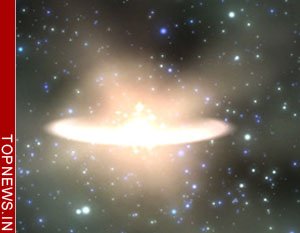Exoplanets which venture near their host stars are doomed to premature deaths
 London, April 29 : Two new studies have suggested that exoplanets which venture near their host stars are doomed to premature deaths - even before they get close enough to be ripped apart by the stars' gravity.
London, April 29 : Two new studies have suggested that exoplanets which venture near their host stars are doomed to premature deaths - even before they get close enough to be ripped apart by the stars' gravity.
According to a report in New Scientist, the studies say that a star's gravity can put a nearby planet on a `fast track' to spiralling into the star and may also cause the planet to lose much of its atmosphere.
More than 300 exoplanets have been catalogued to date. Many are situated close to their host stars, where it is thought to be too hot for gas and dust to collapse into planets in the first place.
That implies that the planets came from farther away and migrated inwards.
But strangely, the closest-in ones are commonly found some 0.05 astronomical units (AU) from their host stars (1 AU is the distance from the Earth to the sun).
This distance, which corresponds to a three-day orbit around a star as heavy as the sun, is sometimes called the "three-day pile-up".
No one is sure why the planets seem to pile up there. Very close to a star, at a boundary called the Roche limit, planets are dismembered by the star's gravity.
But, the migration of planets seems to stop well outside this limit. So, the question remains that why do planets seem to stop there?
Brian Jackson of the University of Arizona in Tucson and colleagues offer an explanation.
There may be planets that orbit closer in, but they will not do so for very long before they get dragged inwards by their host star's gravity.
The tugging is caused by tidal forces between the planet and its star - differences in the pull of gravity on the objects' near and far sides.
Close-in planets seem to orbit their stars faster than the stars themselves rotate, so this tidal friction will have the opposite effect.
It causes the stars to deform. Their gaseous atmospheres are stretched towards the close-in planets, and causes the planets to migrate inwards.
Planets may only last in close-in orbits for perhaps tens of millions to a few billion years before spiralling into their stars.
"Once a planet gets that close, the tide raised on the star by the planet causes the planet to migrate in so quickly they're hard to catch," Jackson told New Scientist.
Stars that are spinning abnormally fast for their age could also be a sign that they have absorbed a planet and "spun up" as a result, he added. (ANI)